California State University, Fresno General Laboratory Safety Inspection
advertisement
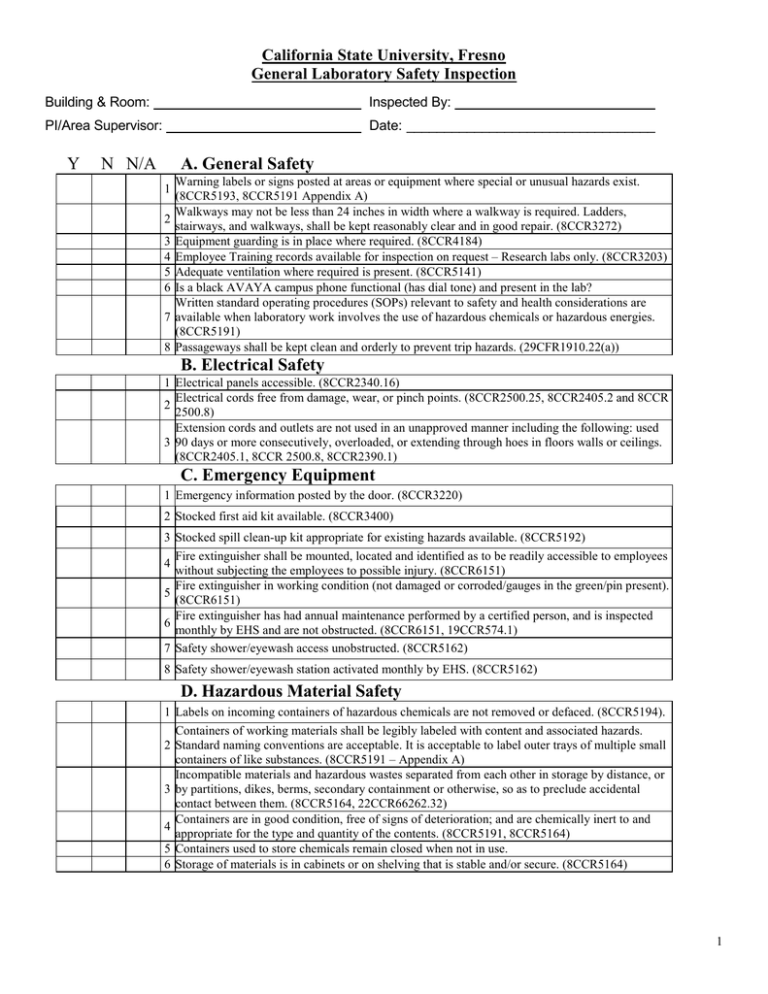
California State University, Fresno General Laboratory Safety Inspection Building & Room: Inspected By: __________________________ PI/Area Supervisor: Date: _________________________________ Y N N/A A. General Safety 1 2 3 4 5 6 7 8 Warning labels or signs posted at areas or equipment where special or unusual hazards exist. (8CCR5193, 8CCR5191 Appendix A) Walkways may not be less than 24 inches in width where a walkway is required. Ladders, stairways, and walkways, shall be kept reasonably clear and in good repair. (8CCR3272) Equipment guarding is in place where required. (8CCR4184) Employee Training records available for inspection on request – Research labs only. (8CCR3203) Adequate ventilation where required is present. (8CCR5141) Is a black AVAYA campus phone functional (has dial tone) and present in the lab? Written standard operating procedures (SOPs) relevant to safety and health considerations are available when laboratory work involves the use of hazardous chemicals or hazardous energies. (8CCR5191) Passageways shall be kept clean and orderly to prevent trip hazards. (29CFR1910.22(a)) B. Electrical Safety 1 Electrical panels accessible. (8CCR2340.16) Electrical cords free from damage, wear, or pinch points. (8CCR2500.25, 8CCR2405.2 and 8CCR 2 2500.8) Extension cords and outlets are not used in an unapproved manner including the following: used 3 90 days or more consecutively, overloaded, or extending through hoes in floors walls or ceilings. (8CCR2405.1, 8CCR 2500.8, 8CCR2390.1) C. Emergency Equipment 1 Emergency information posted by the door. (8CCR3220) 2 Stocked first aid kit available. (8CCR3400) 3 Stocked spill clean-up kit appropriate for existing hazards available. (8CCR5192) Fire extinguisher shall be mounted, located and identified as to be readily accessible to employees 4 without subjecting the employees to possible injury. (8CCR6151) Fire extinguisher in working condition (not damaged or corroded/gauges in the green/pin present). 5 (8CCR6151) Fire extinguisher has had annual maintenance performed by a certified person, and is inspected 6 monthly by EHS and are not obstructed. (8CCR6151, 19CCR574.1) 7 Safety shower/eyewash access unobstructed. (8CCR5162) 8 Safety shower/eyewash station activated monthly by EHS. (8CCR5162) D. Hazardous Material Safety 1 Labels on incoming containers of hazardous chemicals are not removed or defaced. (8CCR5194). Containers of working materials shall be legibly labeled with content and associated hazards. 2 Standard naming conventions are acceptable. It is acceptable to label outer trays of multiple small containers of like substances. (8CCR5191 – Appendix A) Incompatible materials and hazardous wastes separated from each other in storage by distance, or 3 by partitions, dikes, berms, secondary containment or otherwise, so as to preclude accidental contact between them. (8CCR5164, 22CCR66262.32) Containers are in good condition, free of signs of deterioration; and are chemically inert to and 4 appropriate for the type and quantity of the contents. (8CCR5191, 8CCR5164) 5 Containers used to store chemicals remain closed when not in use. 6 Storage of materials is in cabinets or on shelving that is stable and/or secure. (8CCR5164) 1 Storage of materials in fume hoods minimized and limited to chemicals in use. (8CCR5191 Appendix A) Peroxide formers should be discarded within one year of the date opened if not tested every six 8 months thereafter for peroxide formation. Compressed gas cylinders shall be stored or transported in a manner to prevent them from creating 9 a hazard by tipping, falling or rolling. (8CCR4650) Lab employees know the location and availability of known reference material on the hazards, 10 safe handling, storage and disposal of hazardous chemicals found in the laboratory including, but not limited to, Safety Data Sheets received from the chemical supplier. (8CCR5191) 11 Current chemical inventory available for inspection. 12 Laboratory Type Fume Hood have been tested by EHS at least annually. (8CCR5154.1) Biological safety cabinets have been tested by a qualified person (contractor) at least annually. 13 (8CCR5154.2) 7 E. Chemical Hazardous Waste 1 Campus “Guidelines for Laboratory Hazardous Waste Accumulation” posted in laboratory. Hazardous waste containers are properly labeled. Label shall not contain abbreviations (e.g. 2 H2SO4) in the content descriptions, and shall have the accumulation start date, hazard category, physical state filled in. (22CCR66262.32) Hazardous waste containers are in good condition, not leaking and compatible with contents. 3 (22CCR66265.171 and 22CCR66265.172) Hazardous waste containers are securely closed at all times when waste is not being added or 4 removed. (22CCR66265.173) Containers used for hazardous waste accumulation are removed from point of generation early 5 enough to allow removal from campus entirely in accordance with accumulation time limits requirement (8CCR66262.34). Hazardous waste container storage in fume hoods is minimized and limited to wastes generated by 6 activities at the time of work and incompatible wastes are segregated (22CCR66265.17). F. Biohazardous Waste 1 2 3 4 Biohazardous waste collected in red biohazard bags conspicuously labeled with the words “Biohazardous Waste” or with the international biohazard symbol and the word “BIOHAZARD”. (8CCR5193, HSC 118275) Biohazardous bagged-waste stored in rigid, leak-resistant containers, with tight-fitting lids, and labeled with the words “Biohazardous Waste” or with the international biohazard symbol and the word “BIOHAZARD” on the lid and sides so as to be visible from any lateral direction. (8CCR5193, HSC 118280) Biohazardous sharps waste collected in sharps containers ready for disposal are securely closed, and not stored in the lab for more than 30 days.(HSC 118285) Any lab generating up to 10 pounds per month of unrefrigerated biohazardous waste, shall not store it in the lab for more than 30 days. (HSC 118280) G. Personal Protective Equipment 1 PPE appropriate to the hazards available and used by students/staff/faculty (e.g. eye/face protection, heat-resistant gloves or tongs, lab coats). (8CCR3380) 2 PPE maintained in a safe, sanitary condition. (8CCR3380) Evidence of Respirator use in the laboratory (i.e. respirators hanging from fume hoods) has been 3 verified that users are part of the Respiratory Protection Program or Voluntary Respiratory Use Program. (8CCR5144) NOTES: 2 3
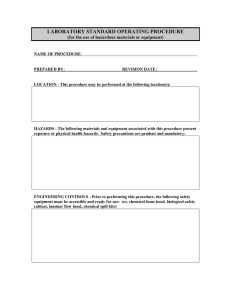

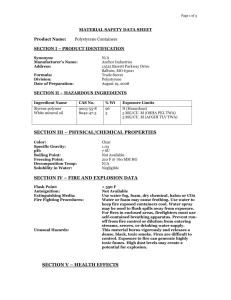
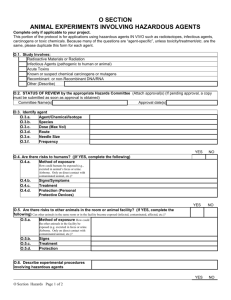
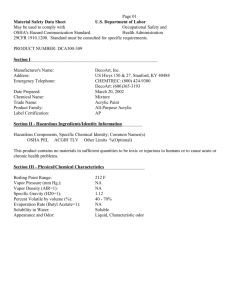
![B. ANNUAL CAMPUS EHS INSPECTION CHECKSHEET [ ART ]](http://s2.studylib.net/store/data/011933404_1-6a426f5465088305b727d770ea0f40a1-300x300.png)